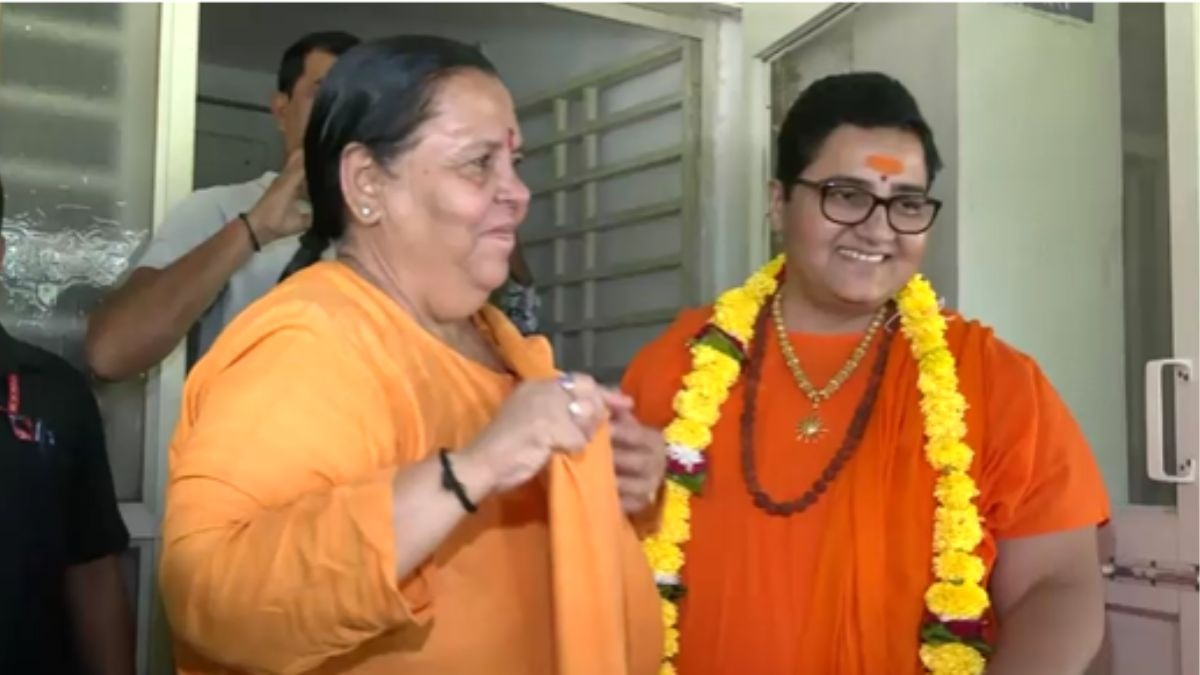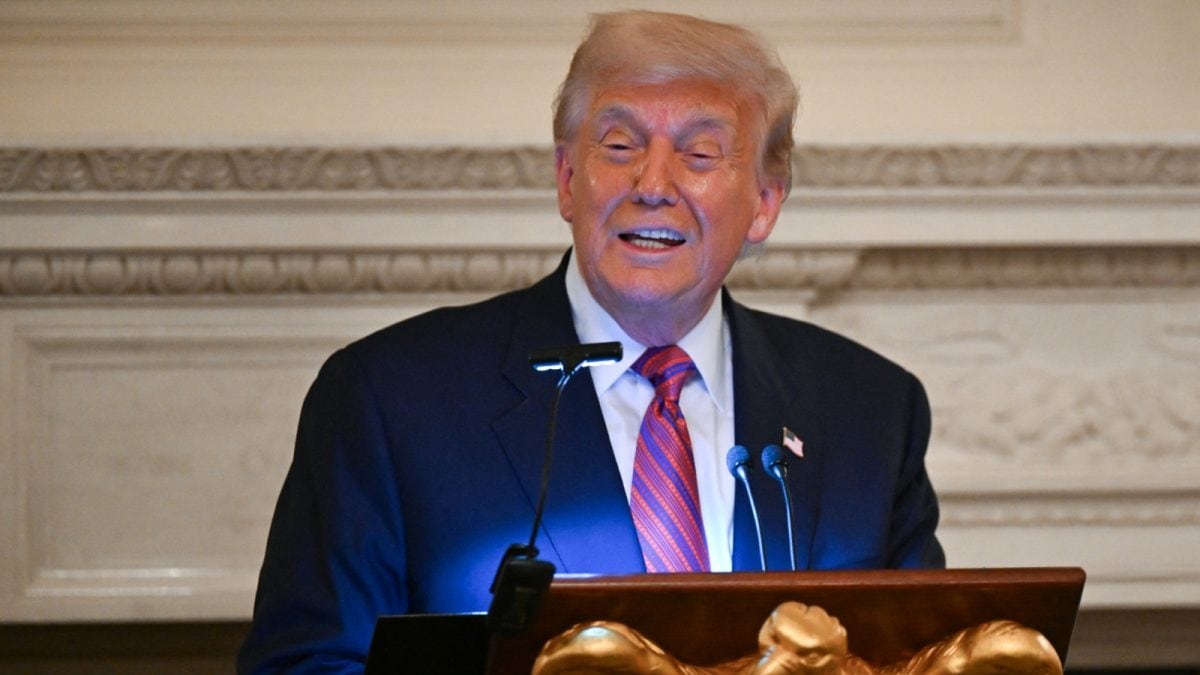ARTICLE AD BOX
Last Updated:August 06, 2025, 11:06 IST
As Indonesia prepares to mark 80 years of independence, a fictional pirate flag from the ‘One Piece’ anime is flying high, in protest. Here's why it's going viral

First released in 1999, One Piece is one of the world’s most popular and longest-running anime franchises.
In the Japanese anime One Piece, the Jolly Roger is a pirate flag carried by the Straw Hat Pirates, a ragtag group of misfits led by the anime’s protagonist Monkey D. Luffy. Their mission? To defy tyranny, challenge corrupt power, and seek ultimate freedom. But as Indonesia gears up to celebrate its 80th Independence Day on August 17, this anime symbol of resistance has found an unlikely real-world role: as a banner of protest.
Instead of the traditional red-and-white flag fluttering from rooftops and motorcycles, many Indonesians are now hoisting the One Piece Jolly Roger, a black flag emblazoned with a straw hat-wearing skull, in neighbourhoods across the archipelago. For those flying it, the message is clear: Indonesia’s democratic spirit feels hollow, and the real enemies are no longer colonisers, but the powerful elites in charge.
“This is the spirit of resistance against injustice," one user wrote on social media, explaining why the red-and-white flag felt “too sacred" to raise at a time when many people still felt “colonised by those in power"
How The Trend Took Off
The phenomenon began picking up momentum in late July and exploded in early August across platforms like TikTok and Instagram. Photos and videos of the Jolly Roger flag flying on balconies, motorcycles, homes, and flagpoles quickly went viral.
In some cases, the pirate flag was raised on the same pole as the Indonesian national flag, a move that has sparked sharp reactions from lawmakers and state officials.
Many Indonesians have gone a step further, digitally modifying official Independence Day posters and emblems to include the anime symbol, using it as a cheeky but pointed critique of the government.
The protest has not remained just online. Dendi Christanto, owner of the garment company Wik Wiki Apparel in Central Java, told Jakarta Post that he’s received “thousands of orders" for the pirate flag in recent weeks. “The trend started to pick up by the end of July. I could receive hundreds of orders a day from all over Indonesia," Dendi said on Monday.
He added that many customers saw the flag as “a form of freedom of expression and social criticism ahead of the Independence Day celebrations."
For many, the anime reference was also a way to veil political frustration in pop culture symbolism. “One Piece is like the ‘state of Konoha’ and was just in time for the Independence Day," Dendi said, referring to Naruto, another popular anime, whose fictional village ‘Konoha’ is often used as a euphemism for Indonesia on social media.
World’s Most Popular Anime
First released in 1999, One Piece is one of the world’s most popular and longest-running anime franchises. Created by Japanese manga artist Eiichiro Oda, the series follows a crew of rebellious pirates in search of freedom and justice. Its themes of anti-authoritarianism, loyalty among outsiders, and resistance to corrupt power have earned it a devoted following across Southeast Asia, particularly in Indonesia.
Why Are Indonesians Choosing The ‘One Piece’ Flag Over Their National One?
At the heart of the protest is a broader sentiment of dissatisfaction, particularly among the youth and lower-income communities, who feel increasingly alienated from the country’s political and civic narrative.
The flashpoint came when President Prabowo Subianto, ahead of his first Independence Day as head of state, called on citizens to fly the red-and-white flag throughout August as a show of national pride. But instead of sparking patriotism, the appeal triggered a wave of cynicism online, especially among those who view the current administration as being out of touch with the struggles of ordinary Indonesians.
Many saw the directive as hollow, a symbolic gesture meant to paper over real grievances.
“For many citizens, that call for national pride rang hollow. They saw it as a demand for performative patriotism from a government whose policies they felt were failing the people, especially the lower classes," wrote Indonesian commentator Farhan Rizqullah in an article on Medium. “So, they responded with a symbol of their own."
The Jolly Roger’s popularity, especially among younger Indonesians, is rooted in its symbolism. In One Piece, the flag isn’t just a pirate marker. It represents a resistance to oppression, a call for freedom, and loyalty among outcasts challenging authoritarian systems. It’s that message that many Indonesians are now rallying behind.
What Has The Indonesian Government Said About It?
The official response has been far from united, ranging from cautious acceptance to stern warnings of legal consequences. Some voices in the government have urged restraint and dialogue.
Deddy Yevri Sitorus, an MP from the Indonesian Democratic Party of Struggle, told the Jakarta Globe that flying the flag “should be seen as a public expression of criticism, which is part of a democratic society." He added: “This kind of symbolic action is better than street protests that could turn violent."
Deputy Minister of Home Affairs Bima Arya Sugiarto took a similar view, telling Antara news agency: “In my view, such a form of expression is a natural phenomenon in a democracy, as long as it does not contradict the constitution." But he emphasised that the national flag “must remain paramount".
But others are calling for a crackdown. Coordinating Politics and Security Minister Budi Gunawan has cited Article 24 Clause 1 of Law No. 24/2009, which bans the national flag from being flown below other flags or symbols, warning that violators could face “criminal consequences".
“Flying the anime flag was a provocation to reduce the authority and degree of the state flag," Budi said on Saturday, according to Jakarta Post.
How Are Police Enforcing This?
According to Jakarta Globe, police in Central Jakarta have begun monitoring public spaces for signs of the One Piece flag and other “non-national" symbols.
“We’re monitoring the use of non-national flags and symbols that don’t align with the spirit of nationalism, including pirate or fictional-themed flags," Central Jakarta Police spokesman Ruslan Basuki said. He clarified that police were using a “persuasive and educational" approach for now, and had not found any legal violations yet.
In Banten, however, Deputy Police Chief Hengki issued a more stern warning. “We’ll take firm action if we find any violations," he said, particularly warning against flying the Jolly Roger near the national flag.
In Belitung, officials from the local National Unity and Politics Agency also urged people to avoid using the anime flag. “We’re asking people not to raise the One Piece flag, especially as we celebrate the Republic’s 80th anniversary," said agency head Fedy Malonda.
Interestingly, Bali officials have taken a more tolerant stance. “As long as it doesn’t violate any established national regulations, it’s not an issue," Bali Police spokesperson Ariasandy told local media. “It won’t diminish the honour or dignity of Indonesia."
Is It Illegal To Fly The ‘One Piece’ Flag In Indonesia?
Not exactly, but there are conditions.
Indonesian law doesn’t explicitly ban fictional or cultural flags on private property. However, if flown alongside the national flag, protocols require that the red-and-white flag always take the position of honour.
That means flying the anime flag above or at the same level could potentially be interpreted as a violation, particularly during Independence Day celebrations, where national symbolism takes on heightened significance.
So far, there have been no criminal charges or confiscations, but officials have hinted that stricter enforcement could follow if the trend continues into August 17.
What Happens Next?
With August 17 approaching, the status of the Jolly Roger protest remains uncertain. While authorities have so far relied on persuasion and protocol reminders, multiple officials from local police to cabinet ministers have warned that firmer action could follow if the anime flag is flown in ways deemed disrespectful.
So far, no legal action has been taken, and many citizens continue to display the flag on homes, vehicles, or in online posts. Traders in some regions, however, have reported hesitancy in selling the flag openly, citing fears of confiscation or unclear enforcement.
The government’s mixed response underscores the legal grey area in which the protest sits. With no outright ban on fictional flags in private spaces, and rising public interest in symbolic expression, the situation remains fluid.
The News Desk is a team of passionate editors and writers who break and analyse the most important events unfolding in India and abroad. From live updates to exclusive reports to in-depth explainers, the Desk d...Read More
The News Desk is a team of passionate editors and writers who break and analyse the most important events unfolding in India and abroad. From live updates to exclusive reports to in-depth explainers, the Desk d...
Read More
- Location :
- First Published:
August 06, 2025, 11:05 IST
News explainers Why Is A Japanese Anime Pirate Flag Causing A Political Uproar In Indonesia?
Disclaimer: Comments reflect users’ views, not News18’s. Please keep discussions respectful and constructive. Abusive, defamatory, or illegal comments will be removed. News18 may disable any comment at its discretion. By posting, you agree to our Terms of Use and Privacy Policy.
Read More



.png)
.png)
.png)
















 17 hours ago
6
17 hours ago
6








 English (US) ·
English (US) ·